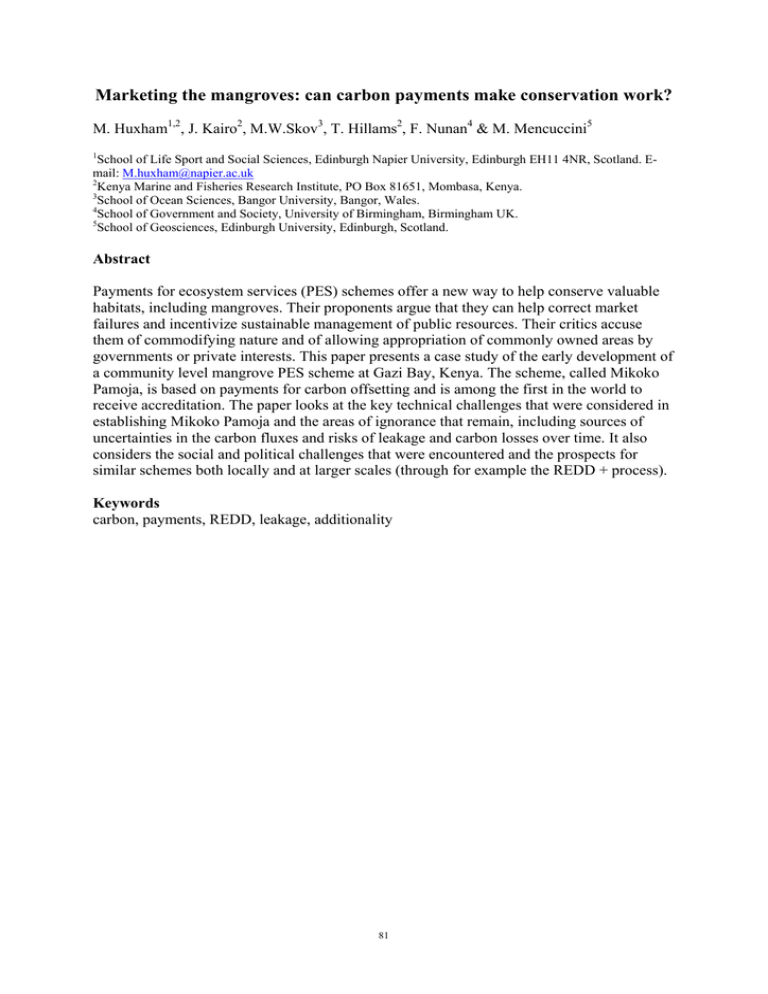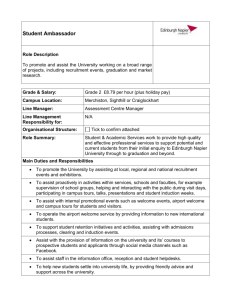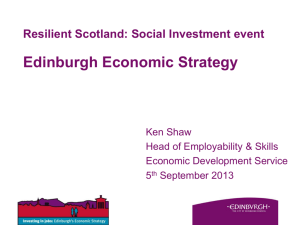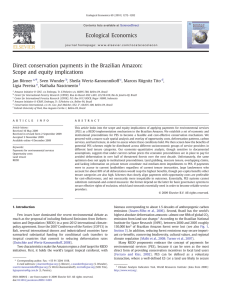Marketing the mangroves: can carbon payments make conservation work? M. Huxham
advertisement

Marketing the mangroves: can carbon payments make conservation work? M. Huxham1,2, J. Kairo2, M.W.Skov3, T. Hillams2, F. Nunan4 & M. Mencuccini5 1 School of Life Sport and Social Sciences, Edinburgh Napier University, Edinburgh EH11 4NR, Scotland. Email: M.huxham@napier.ac.uk 2 Kenya Marine and Fisheries Research Institute, PO Box 81651, Mombasa, Kenya. 3 School of Ocean Sciences, Bangor University, Bangor, Wales. 4 School of Government and Society, University of Birmingham, Birmingham UK. 5 School of Geosciences, Edinburgh University, Edinburgh, Scotland. Abstract Payments for ecosystem services (PES) schemes offer a new way to help conserve valuable habitats, including mangroves. Their proponents argue that they can help correct market failures and incentivize sustainable management of public resources. Their critics accuse them of commodifying nature and of allowing appropriation of commonly owned areas by governments or private interests. This paper presents a case study of the early development of a community level mangrove PES scheme at Gazi Bay, Kenya. The scheme, called Mikoko Pamoja, is based on payments for carbon offsetting and is among the first in the world to receive accreditation. The paper looks at the key technical challenges that were considered in establishing Mikoko Pamoja and the areas of ignorance that remain, including sources of uncertainties in the carbon fluxes and risks of leakage and carbon losses over time. It also considers the social and political challenges that were encountered and the prospects for similar schemes both locally and at larger scales (through for example the REDD + process). Keywords carbon, payments, REDD, leakage, additionality 81



